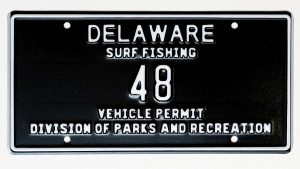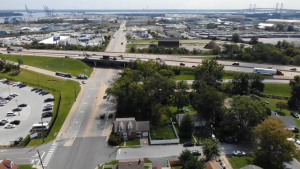Aimed at thwarting impacts of pollution from upwind states carrying into Delaware
DOVER – Delaware is taking action again to reduce detrimental impacts of poor air quality coming into the state from upwind sources, with DNREC seeking to have the U.S. Environmental Protection Agency find that the Homer City, Pa. Generating Station is emitting these air pollutants in violation of the federal Clean Air Act (CAA).
As with CAA 126(b) petitions filed last summer by DNREC against the Brunner Island power plant in York County, Pa., and the Harrison Power Station near Hayward, W. Va., the Department argues that Delaware’s air quality is often adversely affected by unhealthy ozone created from pollutants emitted in upwind states. DNREC contends that air pollution generated within these upwind states carries into and pollutes Delaware’s air, causing asthma, respiratory disease, and other public health problems for Delawareans, and also causes the state’s non-compliance with federal air quality standards – and will continue to cause these problems so long as sources such as the power plants petitioned against by DNREC continue emitting pollutants, particularly nitrogen oxide (NOx), without consistent use of modern anti-pollution controls.
In its petitions, DNREC has noted that more than 94 percent of the ozone levels in Delaware are created by the transport of air pollutants from upwind states – a stark contrast to what occurs within the state’s borders, where DNREC has worked with power producers and manufacturers and the public to sharply reduce Delaware’s own emissions.
“Yet again we are petitioning the EPA to act on the fact that our ability to achieve and maintain health-based air quality standards is severely impacted by sources outside of the state of Delaware,” DNREC Secretary David Small said. “Our position has been corroborated by EPA’s own modeling technology: That Pennsylvania and West Virginia and other states’ emissions significantly impact Delaware. We are petitioning EPA to reduce that impact and the associated health threats impacting Delawareans through harmful ozone that comes from outside our borders.”
As in the aftermath of each CAA 126(b) petition filed by DNREC, Sec. Small said that Delaware continues to assess the impact of other generating stations and power plants in the upwind states. The petition points out that the facilities cited for upwind air pollution manage to skirt EPA jurisdiction because some of the states do not have regulatory requirements for the power plants’ installing highly-effective NOx emissions controls, while still other upwind states do not require the facilities to consistently operate existing NOx controls at high levels of efficiency, and in this case states allow power plants to demonstrate compliance with regulatory requirements using long-term averaging of emissions that do not address the impact of transported pollution on the short term (8-hour) ozone standard.
Section 126(b) of the Clean Air Act requires that within 60 days after the EPA’s receipt of any petition (and after a public hearing), the EPA administrator will make such a finding as requested, requiring the Homer City Generating Station to limit short term NOx emissions to levels that are protective of the 8-hour ozone NAAQS in downwind areas such as Delaware, or will deny the petition.
Vol. 46, No. 397
Media contact: Michael Globetti, DNREC Public Affairs, 302-739-9902
-30-














































































